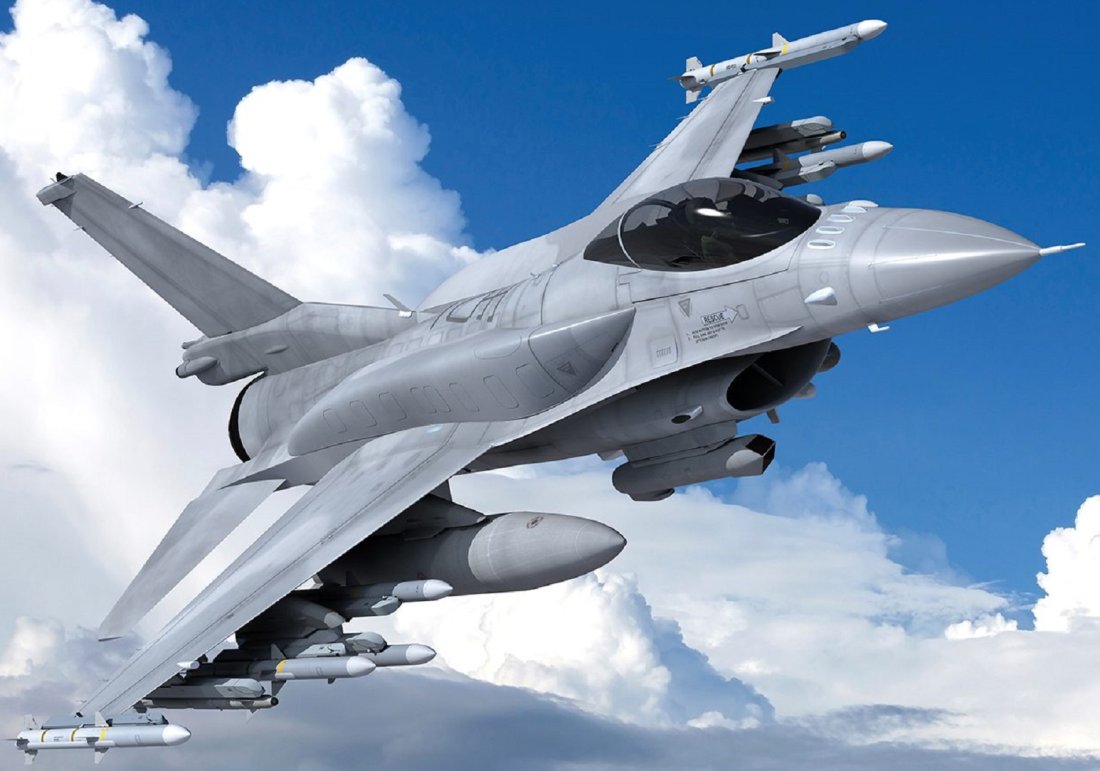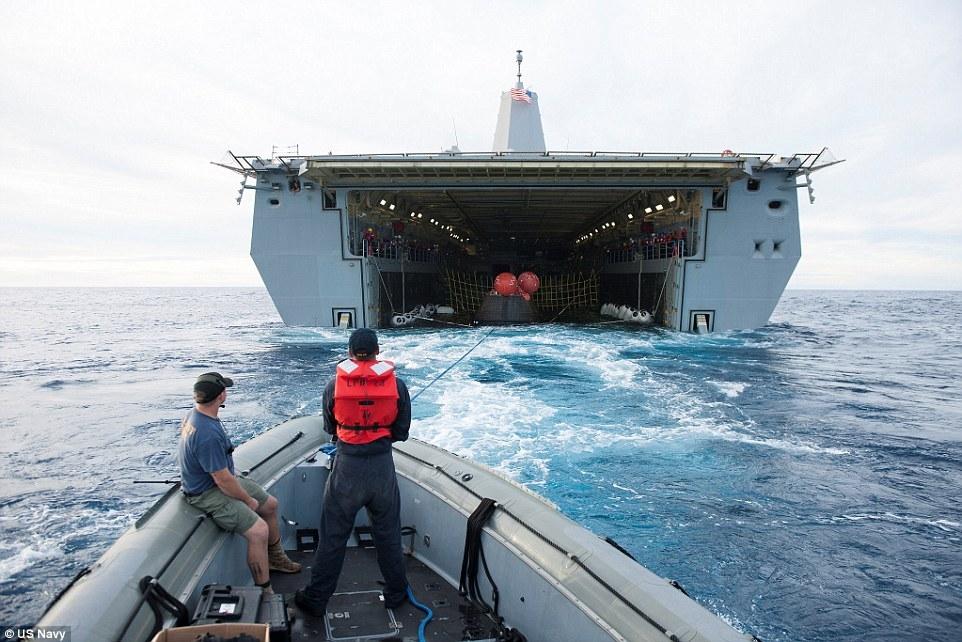PLA is already using and made available for export these SWAMP OF ATTACK DRONES dumped down by Transporter Aircrafts. Carrying light missiles rockets alike RPGs.
AI vision and commanded remotely.
Fire power of a swamp is exceeding 4 Apache Attack Helicopters.
Sweep everything off surface of earth.
https://mil.sina.cn/zgjq/2018-11-07/detail-ihnprhzv6556460.d.html?from=wap
中国无人机蜂群作战系统亮相 战力超4架美军阿帕奇
参考消息
11月07日 10:04
关注
第十二届珠海航展已于11月6日开幕,记者在中国兵器馆参观期间,在北方工业集团“蜂群无人机系统”展台展出的国产攻击型多轴无人机蜂群作战的试验视频令人眼前一亮,因为过去类似的作战概念只在西方军队的未来无人机作战规划中才能见到。 下面记者就分别从几个方面简析这一系统。

美军C-130运输机空投“小妖精”无人机蜂群设想图。
无人机“蜂群作战”突防能力强 “密集阵”速射炮难拦截
先简要介绍下何为无人机“蜂群作战”,顾名思义,这一概念最初源于蜜蜂群,科学家发现蜜蜂(或蚂蚁)一类的群体昆虫,虽然单个个体的智能十分低下,但却可以通过群体相互之间的简单协作所表现出来的集体智能来弥补,通过一些局部简单的相互交流,整个“蜂群”(或蚁群)可以通过组织协作完成一些较为复杂的、个体无法完成的任务,类似的“集群智能”正是构成无人机“蜂群作战”的技术原理。
美国在无人机“蜂群作战”领域开展研究时间较早,不仅已进行过多次无人机“蜂群”编队飞行试验(例如 2017年1月,美海军3架F/A-18E/F“超级大黄蜂”舰载战机曾在加利福尼亚州进行的一次试验中,连续释放了103架“灰山鹑”微型无人机,后者在释放后还进行了“蜂群”编队集结,以及沿路径点进行编组飞行),而且已进行过拦截攻击试验。

美军伯克级导弹驱逐舰。
试验对象为美海军一艘伯克级“宙斯盾”导弹驱逐舰,目标是拦截由8架小型无人机组成的“蜂群”,结果经测试发现,只有“密集阵”六管20毫米加特林速射近防炮(每分射速4500发)和12.7毫米重机枪配合才能够有效拦截无人机,但对无人机“蜂群”拦截时,平均有2.8架无人机能够规避拦截弹幕。即使在试验中增加更先进的传感器、更多的拦截火力(“密集阵”近防炮和重机枪),仍然至少会有一架无人机能够躲避“宙斯盾”战舰的拦截。

“密集阵”近防炮开火资料图。
仅有8架无人机组成的“蜂群”尚且如此,试想下如果增加到16架或24架无人机,且都搭载有1至2枚轻型导弹,或是部分搭载有电子干扰设备,伯克级战舰恐怕很难招架了。反过来,理论上,伯克级在遭遇敌方大批导弹攻击时,也可出动大批搭载有电子诱饵的无人机“蜂群”,作为假目标误导敌军导弹偏离目标,效能或大于现役的干扰设备。可见无人机“蜂群作战”未来对攻、守两方都有巨大的发展潜力,既向进攻方展示了难以估量的力量,也同时对防守方发出了不可忽视的警告。

挂载2个“蓝箭-5”反坦克导弹发射筒的MR-150多轴无人机。
国产无人机挂末敏弹消灭敌坦克群 效能超4架“阿帕奇”武直

七夕情人节礼物小夜灯藤球灯 送女生创意浪漫生日礼物送女友老婆爱人浪漫表白礼物 创意礼品 高座米黄色
广告


北京国安球员版棉马甲中超冬训外套春季组队训练棉外套运动马甲 棉马甲-国安刺绣队徽 XXXL
广告

此次中国兵器馆中展出的“蜂群作战”用攻击型无人机,不论是从无人机本身,还是所搭载的各种武器,实际都是“现货产品”。攻击型无人机大概分为大型的MR-150型、和小型的MR-40型两种,前者为六轴旋翼推进,一架可以挂载5枚反装甲末敏子弹药或2个“蓝箭-5”反坦克导弹发射筒;2个“蓝箭-5”反坦克导弹发射筒后者为4轴旋翼推进,可以挂载2枚轻型导弹或一个单兵多用途转筒榴弹发射器。可见系统整体花费成本不高,难点主要在于无人机“蜂群”系统的控制技术方面。

宣传片中搭载反装甲末敏弹的MR-150无人机“蜂群”
据集团专业人士透露,目前该作战系统最多可同时遥控15架攻击型无人机编组“蜂群”作战,如果按现场播放的宣传片展示内容来看,如果按一次出动15架MR-150大型攻击型无人机,每架搭载5枚反装甲末敏弹计算,“蜂群”一次出击理论上就能摧毁敌军75辆坦克或装甲车辆,如果和美军现役的AH-64D“长弓阿帕奇”武直(一架一次出击最多可携带16枚AGM-114“地狱火”反坦克导弹)对比,

搭载16枚“地狱火”导弹飞行的美军“长弓阿帕奇”武直。
15架MR-150大型无人机组成的“蜂群”的作战效能比4架“阿帕奇”武直还要多,而“无人机”蜂群不仅成本要远低于后者(AH-64D武直的单价为3300万美元,2010年美元面值),而且隐蔽性极强,可伪装在重型军卡或普通大型载重卡车中搭载。可预见的是在未来对控制技术进行改进后,国产无人机“蜂群”的整体作战效能还能进一步提升。

搭载单兵多用途榴弹发射器的MR-40无人机。
无人机“蜂群”作战灵活性强 可军民两用反恐作战
除了正规军使用无人机“蜂群”执行反装甲集群作战外,宣传视频还演示了无人机“蜂群”的另一作战用途,搭载单兵手持多用途榴弹发射器等非致命武器,处理反恐、劫持人质等“低烈度”任务。
根据宣传视频演示的内容,手持AK-47步枪的恐怖分子在劫持人质后,占据了一栋多层建筑,并不断向接近的警方开枪射击。这时警方派出了由多架无人机组成的“蜂群”编队,分别搭载有光学传感器、轻机枪(可能配备了橡皮子弹)和榴弹发射器。其中搭载有光学传感器的侦察无人机首先对作战环境进行预先探测(例如建筑的构造,恐怖分子及人质的所在位置等),随后机枪无人机负责从正面火力压制并吸引恐怖分子注意力,另一架搭载有催泪瓦斯的榴弹无人机从建筑的另一侧连续发射多颗榴弹,利用催泪瓦斯将恐怖分子瘫痪后,特警小队突入将其控制,并救出人质。

挂载2枚轻型导弹的MR-40无人机。
由此可见,国产无人机“蜂群”的作战应用并不只局限于正规军的正面战场,在民用领域,特别是反恐、反劫持人质等领域,也有很大的运用潜力。由此能引出的运用情景还有很多,例如在发生自然灾害后,先派出侦察无人机对灾区环境及被困居民进行侦察,之后再派出搭载有药品和生活必需品的运输无人机进入,为伤病员和被困人员提供补给,最后还能引导救援人员对被困人员实施精确定位,并进行营救等。可预见的是,国产无人机“蜂群”的应用前景十分广阔,对此人们可以拭目以待。(文/黄晋一)
China's drone bee colony combat system debuts over 4 US Apaches
Reference News November 07 10:04 Follow
The 12th Zhuhai Air Show was opened on November 6th. During the visit of the China Armament Museum, the reporters exhibited the domestic attack multi-axis UAV bee colony at the North Industrial Group’s “Bee Group UAV System” booth. The test video is eye-catching, because similar combat concepts in the past can only be seen in the future military planning of the Western Army. The following reporters will analyze the system from several aspects.
The US military C-130 transport aircraft airdrops "lemon fairy" drone bee colony plan.
UAV "bee colony combat" penetration ability "dense array" rapid-fire gun difficult to intercept
First, a brief introduction to what is a drone "bee group combat", as the name suggests, this concept originally originated from the bee colony, scientists found a group of insects such as bees (or ants), although the individual individual's intelligence is very low, but can Through the collective intelligence displayed by the simple interaction between the groups, the whole “bee colony” (or ant colony) can accomplish some complicated tasks that cannot be completed by the organization through some simple interactions. Similar "cluster intelligence" is the technical principle that constitutes the "bee colony combat" of drones.
The United States has conducted research in the field of drones in the "bee colony operations". It has not only conducted a number of drone "bee colony" formation flight tests (for example, in January 2017, the US Navy's three F/A-18E/ F "Super Hornet" carrier-based aircraft in a trial in California, the continuous release of 103 "Gray Mountain" micro-UAV, the latter also released a "bee colony" formation assembly, and The grouping flight was carried out along the path point, and an interception attack test has been conducted.
US military Burke-class guided missile destroyer.
The test object is a Burke-class "Aegis" guided missile destroyer of the US Navy. The target is to intercept the "bee colony" consisting of 8 small drones. The results showed that only the "dense array" of six tubes and 20 mm Gart Lin quickly fired near-anti-aircraft (4,500 shots per minute) and 12.7 mm heavy machine guns to effectively intercept the drone, but when the drone "bird colony" intercepted, an average of 2.8 drones could evade the interceptor screen. Even with the addition of more advanced sensors and more fire interception ("dense array" near-anti-guns and heavy machine guns), there will still be at least one drone capable of avoiding the interception of the Aegis warship.
"Dense array" near the anti-cannon fire map.
The "bee colony" consisting of only eight drones is still the case. Imagine if you add 16 or 24 drones, and they are equipped with one or two light missiles, or some are equipped with electronic interference equipment. The Burke-class battleship is probably hard to parry. Conversely, in theory, when the Burke class encounters a large number of enemy missile attacks, it can also dispatch a large number of drones equipped with electronic decoys, which are misleading enemy missiles to deviate from the target, and their effectiveness is greater than that of active duty. Interfering with the device. It can be seen that the drone “Bee Group Combat” has great potential for development in both the attack and the defending. It not only shows the incomprehensible power to the attacking side, but also gives the defending party a warning that cannot be ignored.
An MR-150 multi-axis drone that mounts two "Blue Arrow-5" anti-tank missile launchers.
Domestic drones hang the end of the bomb to eliminate enemy tanks. The performance is over 4 "Apache"
Tanabata Valentine's Day gift night light rattan ball light Send girls creative romantic birthday gift for girlfriend wife wife romantic expression gift Creative gift high seat beige
ad
Beijing Guoan player version cotton vest super winter training jacket spring team training cotton jacket sports vest cotton vest - Guoan embroidery team logo XXXL
ad
The attacking drones used in the "Bee Warfare" exhibited in the China Armory Museum are actually "spot products" from the drone itself or the various weapons carried. The attacking drones are roughly classified into a large MR-150 type and a small MR-40 type. The former is a six-axis rotor propulsion, and one can mount five anti-armor-type ammunition or two "blue arrows". -5" anti-tank missile launcher; 2 "Blue Arrow-5" anti-tank missile launchers. The latter is a 4-axis rotor propulsion that can mount two light missiles or a single multi-purpose rotary grenade launcher. It can be seen that the overall cost of the system is not high, and the difficulty lies mainly in the control technology of the "bee colony" system of the drone.
The MR-150 drone "bee colony" equipped with anti-armored nails in the promo
According to the group's professionals, at present, the combat system can simultaneously remotely control 15 attack-type drones to group "bee colony" operations. If the content of the promotional video displayed on the spot is displayed, if 15 large MR-150s are dispatched once, Attacking drones, each equipped with 5 anti-armor-end-sensitive missiles, the "bee colony" can theoretically destroy 75 tanks or armored vehicles in an attack, if the AH-64D "longbow" with the US military Pach" Wu Zhi (a single attack can carry up to 16 AGM-114 "Hellfire" anti-tank missiles) contrast,
The US military "Longbow Apache" flying with 16 "Hellfire" missiles was armed.
The "bee colony" consisting of 15 MR-150 large drones has more combat effectiveness than the four "Apache" weapons, while the "UAV" bee colony not only costs much less than the latter (AH- The 64D Wuzhi is priced at $33 million, with a face value of $10 in 2010. It is also highly concealed and can be camouflaged in heavy military cards or ordinary large trucks. It is foreseeable that after the improvement of control technology in the future, the overall operational effectiveness of the domestic drone “bee colony” can be further improved.
An MR-40 drone with a single-person multi-purpose grenade launcher.
UAV "bee colony" has strong operational flexibility, dual-use anti-terrorism operations
In addition to the regular army using the drone “bee colony” to perform anti-armor cluster operations, the promotional video also demonstrates another combat use of the drone “bee colony”, equipped with non-lethal weapons such as individual hand-held multi-purpose grenade launchers. Anti-terrorism, hostage-taking and other "low intensity" tasks.
According to the promotional video, terrorists armed with AK-47 rifles occupied a multi-storey building after being taken hostage and fired at close police. At this time, the police sent a "bee colony" formation consisting of several drones, equipped with optical sensors, light machine guns (possibly equipped with rubber bullets) and grenade launchers. The reconnaissance drone equipped with optical sensors first pre-detects the operational environment (such as the construction of the building, the location of the terrorists and hostages, etc.), and then the machine drone is responsible for suppressing from the frontal firepower and attracting the attention of terrorists. Another grenade drone equipped with tear gas continuously fired several grenade from the other side of the building, using tear gas to smash the terrorists, and the special police team broke into it to control it and rescue the hostages.
An MR-40 drone with two light missiles mounted.
It can be seen that the operational application of the domestic drone “bee colony” is not limited to the frontal battlefield of the regular army. It also has great potential in the civilian field, especially in the areas of counter-terrorism and anti-hijacking hostages. There are still many scenarios that can be elicited. For example, after a natural disaster occurs, a reconnaissance drone will be dispatched to reconnoiter the environment and trapped residents of the disaster area, and then a transport drone equipped with medicines and daily necessities will be dispatched. Providing supplies for the wounded and sick and trapped people, and finally guiding the rescuers to accurately locate the trapped people and rescue them. It is foreseeable that the application prospect of the domestic drone “bee colony” is very broad, and people can wait and see. (Text / Huang Jinyi)









































